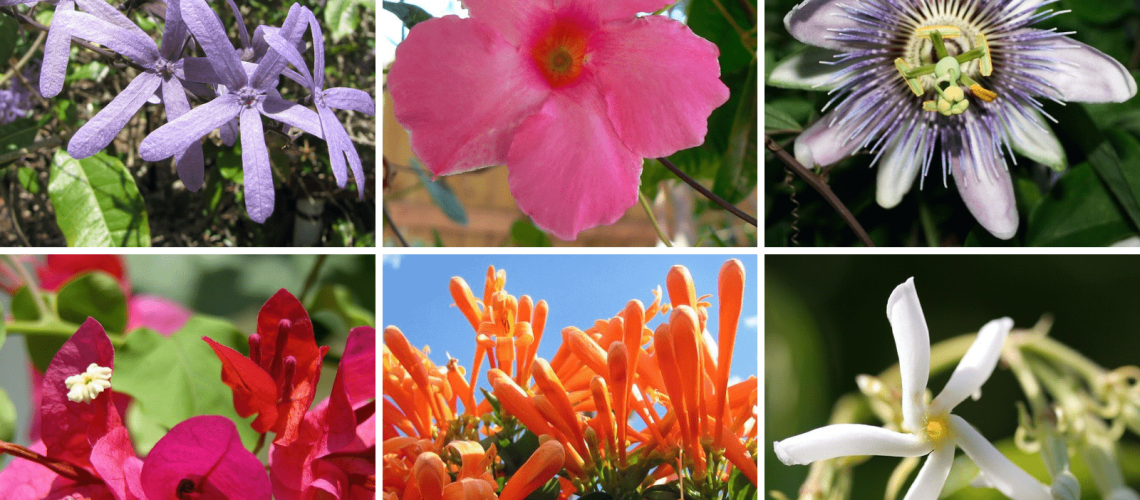Beautiful, low-maintenance, and resilient, the wide varieties of vines that thrive in Florida gardens are a joy to behold. When designing your garden and deciding on a climbing vine, it’s essential to choose a species that can adapt to various conditions, grows flowers that complement the existing flora, and needs only the attention you can give. Many vines help the ecosystem because their flowers attract butterflies and hummingbirds. They are especially good for plants that need shade planted below them.
Type
How a given vine develops and ascends differs among species. Leaning vines and twining vines are the two main categories of vines. It takes a lot of work to train leaners, which grow more like woody-stemmed shrubs, like allamanda and bougainvillea. You can also cultivate these plants as shrubs if that better suits your needs.
New growth from twiners wraps itself around nearby support structures, monstera as one example. Despite their “twiner” classification, plants like the golden pothos and creeping fig prefer to sprawl horizontally on the ground rather than cling to support structures.
Care
If you want to see your vines flourish, you’ll need to give them the attention they need. Despite its subtropical latitude, Florida occasionally experiences cold snaps, especially in the Panhandle. This means that vines need to be planted at the correct time of year to avoid frosts.
Florida native vines can quickly produce a lot of new growth, but they also need to be pruned and trained regularly. Some vines, if left unchecked, can grow underneath siding or even a neighbor’s roof, which is why you should keep them pruned back at all times. New vines should be planted in open areas with plenty of room to expand. To get started, remember clinging vines require support, and twining vines typically require trellises with sturdy ties to guide their growth in the desired direction. Pinching off the tips of new growth promotes branching for a bushier appearance. All vines need regular trimming, but leaving some new growth alone is important because that’s where the flowers will form.
Uses
Many gardens benefit greatly from using vines that thrive in Florida’s subtropical environment. Covering fences, embellishing a trellis or arbor, disguising a wall, casting shade over a patio, and adorning a post or mailbox are just a few examples of practical uses for vines. Planting two or more species of flowering vines that don’t compete for resources will result in blooms at different times of the year.
Florida-Friendly Species
Some of the varieties of vines listed below are known to do well in Florida’s climate.
Leaners
Twiners
- Bleeding Heart
- Petrea
- Confederate Jasmine
- Coral Honeysuckle
- Mandevilla
- Florida Flame Vine
- Passion Vine
FAQ
1. When is the best time to plant vines in Florida?
Florida falls into USDA Zones 10a, 10b, and 11a. This being the case, most vine species are best planted in early spring after the last frost, typically in late March, giving them the entire summer to grow and become established. Evergreen vines can be planted in the winter.
2. How often should vines be pruned?
Depending on the species, once or twice a year.
3. Do vines require fertilizing?
Most vines do not require a great deal of attention, but depending on the soil, they might end up needing fertilizing. Apply fertilizer once a month unless otherwise directed by the plant’s growing guide.
If you need help with landscaping your Florida vines, contact CWG Landscape. We also offer other services such as lawn and garden care, irrigation, drainage, and more!

